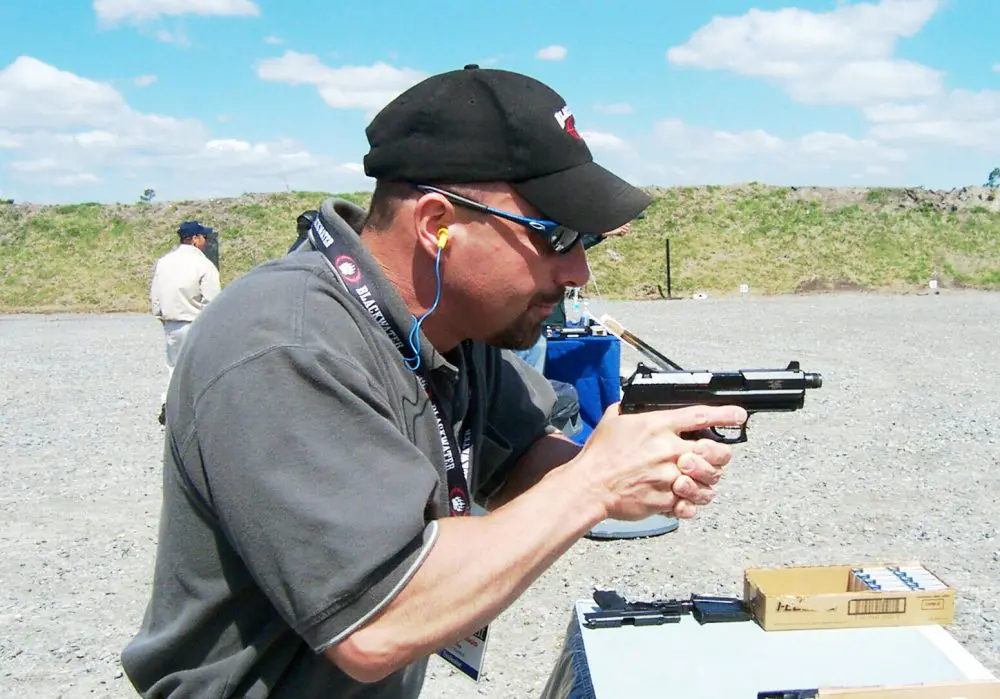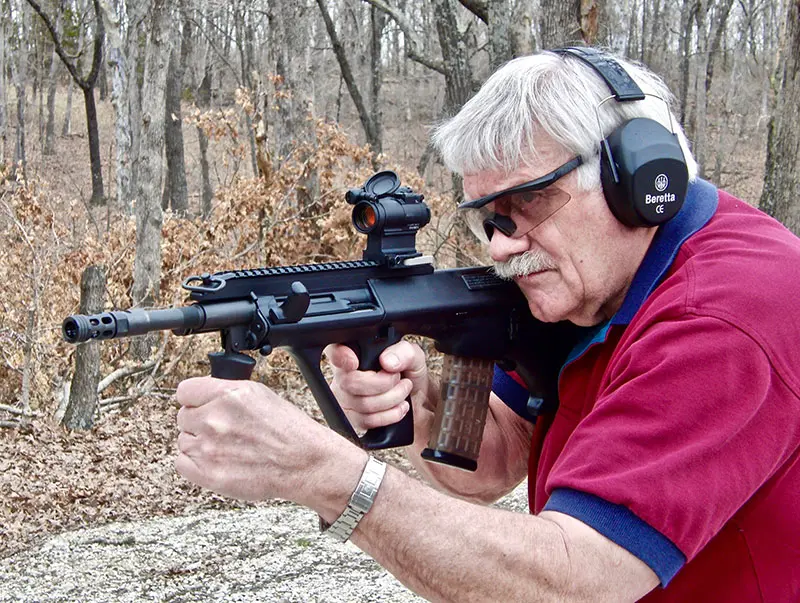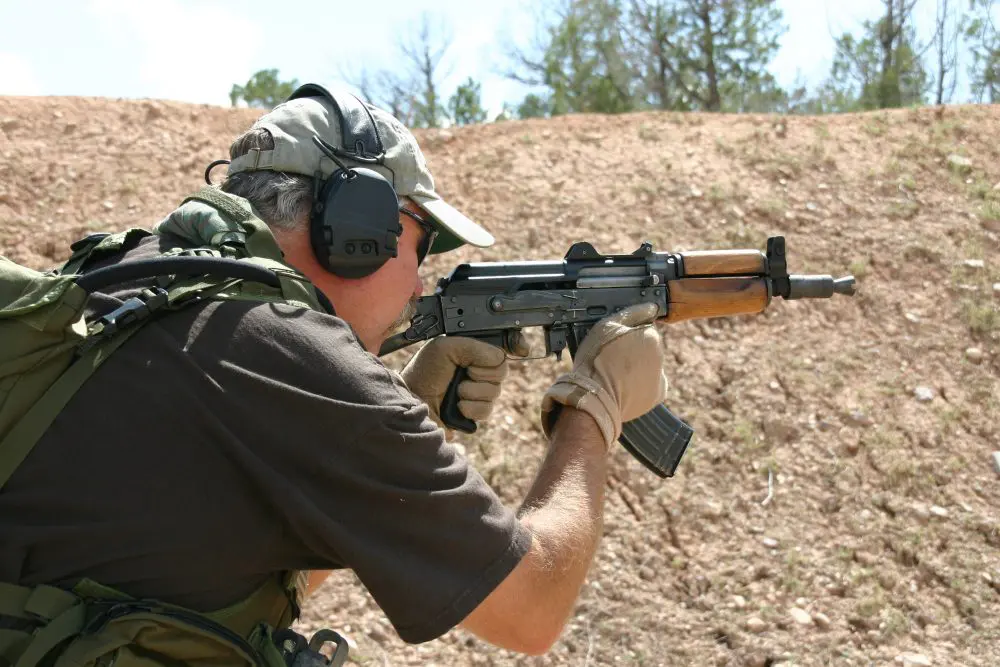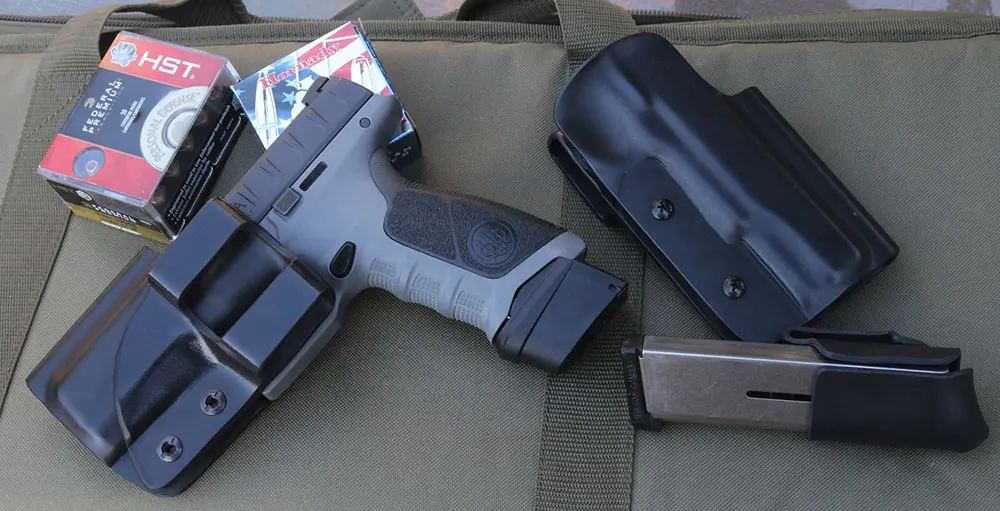Air Marshal Ready.
Multiple mission tasked tactical organizations require a selection of ready gun (RG) positions that are most effective for the option they are executing.
Basically, RG positions are separated into two broad areas, high and low. Anything at chest level or above is high and those oriented below the sternum are considered low. There are preferred RG positions for stronghold clearing and room combat, and there are those that work best when maneuvering in extremely confined quarters, as well as others most suitable for “tube fighting” scenarios.
Table of Contents
RG REQUISITE ATTRIBUTES
In my opinion, an acceptable and effective RG position for tactical team operations must reflect the following attributes:
- Must be safe for you and your teammates in congested environments.
- In the stack, your muzzle should not sweep teammates.
- Affords good retention.
- Permits rapid target acquisition.
- Can be assumed with one or both hands.
- Permits the execution of defensive strikes.
- Can be maintained for extended periods of time.
- Fosters rapid and balanced movement.
In all Ready Gun positions, the finger is always in register off the trigger and outside the trigger guard.

EXTENDED LOW READY
When I was first introduced to room clearing, we relied on the extended low ready. Muzzle is depressed at approximately 45 degrees and held to the right or left of the man in front of you. To mount the gun and index the target, operators simply raise the gun and extend arms, international shooting or Colonel Rex Applegate style. After awhile, we found that this technique was not only fatiguing, but also presented your handgun to an adversary hidden around a corner. We were leading with the gun and, under stress, the rapid lifting motion often caused us to raise the muzzle past the area we wanted to hit. These weaknesses led us to develop the modified stronghold or low ready.

MODIFIED (STRONGHOLD) LOW READY
Muzzle remains depressed to approximately 45 degrees, but elbows are collapsed into the side or lower rib cage. Pistol is held closer to the body and a lift-and-punch technique is employed to mount and index the gun. Note that from this RG position, by merely raising the gun via elbow pivot, a high ready profile can be assumed.
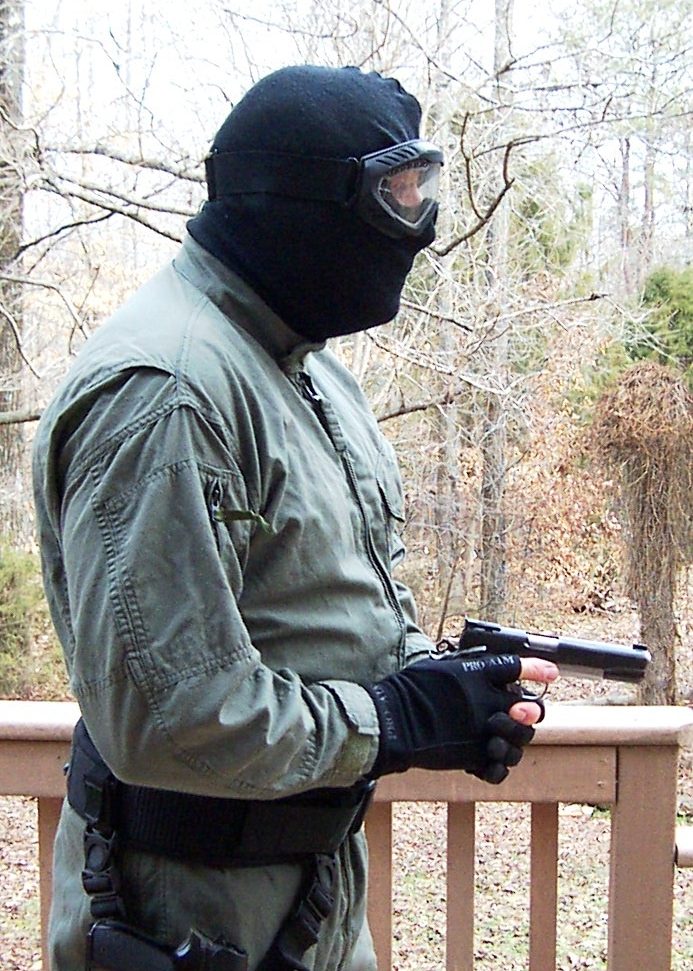
THIRD EYE
Similar to the MLR above, but muzzle is elevated and pointed at the threat. Many police departments and trainers eschew positions that cover people before the shooting starts, because of negligent discharge consequences and legal concerns.
CLOSE COMBAT READY
Assume a muzzle forward, two-hand grip and bring it up to your chest. Move the gun to your dominant side and rest your wrist on your rib cage. A one or two-handed grip can be maintained and the support arm can be employed in a guard position to protect one’s head and neck.

COMPRESSED HIGH READY
Valhalla Training Center advocates the “Compressed High Ready,” which merely requires laterally rotating the muzzle in line with the threat by executing a two-handed straight punch from the chest. To assume this position, a full firing grip is established on the firearm and the support hand embraces the dominant hand with fingers pointing slightly downward. As the gun is punched to the target, the support hand’s grip is completed, and fingers overlap fingers. The gun is canted toward your support side and its muzzle is oriented down, but not at an acute angle. To avoid covering the lower extremities of a man in front of you in the stack, you must turn the gun’s muzzle more toward either side. This requirement places your shoulder perpendicular to the stack. This is a good ready position for the point man or solo officer and would work in tube fighting scenarios. It’s fast, retention is good and it is a comfortable position that can be employed for extended periods of time.
[Note: Low ready positions work well in sterile range environments, but an unintentional shot that penetrates a wood floor could endanger innocents in an apartment below. Conversely, muzzle elevated stances can skewer uninvolved citizens in the residence above the target’s stronghold. Again, trigger finger discipline is mandatory.]
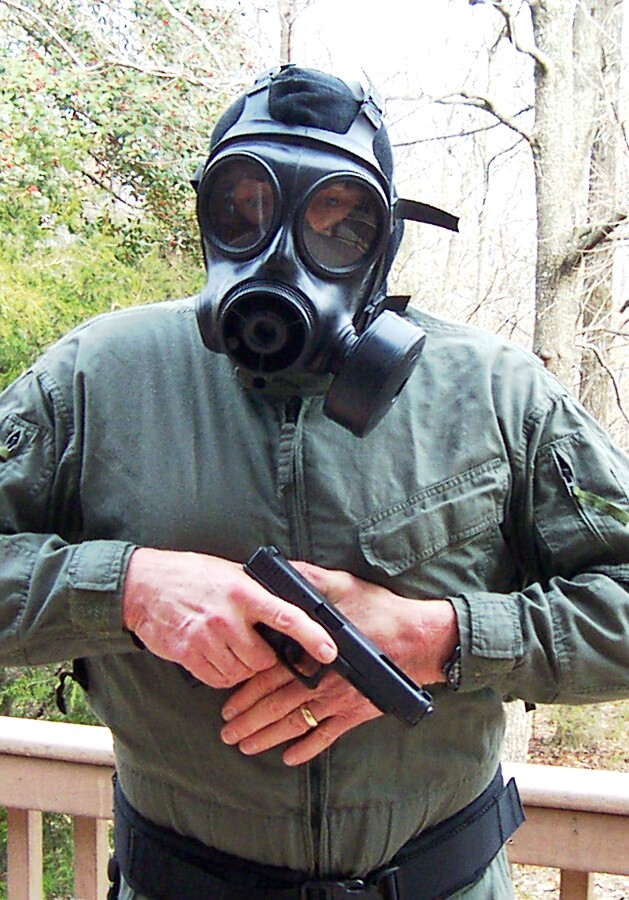
POSITION SUL
Alan Brosnan and Max Joseph, under the Tactical Explosive Entry School’s (TEES) banner, developed this “safety position” while working with Brazilian police in the congested slums of Rio. TEES International has established satellite schools in Brazil and Singapore.
Sul means south in Portuguese and the Compressed High Ready described above resembles it closely. The main differences are that Sul is not held as high on the chest as CHR, but rests on the sternum area. The dominant hand acquires a full firing grip and the support hand lies flat across the breastbone. The gun hand and pistol lay over the back of the support hand with the muzzle pointed to the side, but at an acute angle to the ground. It does not cover any portion of the body and is not masked by team members who precede the operator in the stack. This is why TEES prefers to call it a safety rather than an RG position. Retention is good and the target is acquired with a straight punch while rolling in the support hand’s grip. Although I like to place the pistol’s slide in the web created by my opened thumb and forefinger, Mr. Joseph extends his thumbs and places pad against pad. This superimposes the flat side of the pistol over the support hand knuckles. The CHR may be a tad faster, because the muzzle requires less of a swing to get on target.

BARNHART HIGH READY
Respected IPSC champion Jerry Barnhart has spent a great deal of time training national counter-terrorism assets in the advanced shooting arts. The fastest way to present and move with a handgun is at the high ready, and Barnhart introduced the teams to this technique of movement and gun mount. This has become the primary ready for many of these teams, since the handgun becomes the primary entry weapon for tube fighting options operations. The high ready is preferred because the majority of hostages will be seated and the hostage takers will normally stand to fight. However, this is changing to a degree, as teams have begun to run aisles with stunted MPKs and micro M4 carbines.
Keep your elbows at or close to your rib cage and elevate the muzzle to just below eye level. Flex the wrists and drop the gun’s muzzle toward the horizontal plane. Shots can be broken anywhere along the sightline (Quarter, Half and Full extension) as the gun is extended to the threat, as long as the muzzle is level.

CQD POWER POINT
Developed by renowned martial trainer Duane Dieter, the director of Close Quarters Defense, the Power Point position is primarily intended for use by military and paramilitary tier one security and counter-terrorist teams. From this versatile position, less lethal stunning techniques as well as unique speed shooting methods can be launched. The long or short gun is held up in front of the face with the eyes looking over the tip of the muzzle, which is in line with the threat. In this position, the head and shoulders are protected at all times and the lower extremities are covered by stance. I have not had any problems seeing around the gun when in this position. Contact is made by the underside of the pistol, butt, trigger guard and tip of the slide. With this technique, lights and lasers mounted on the frame under the barrel may be dislodged. For retention, while moving through crowds or past people who may attempt a gun grab, the pistol is rocked or moved forward and back in a circular manner like a wheel, making it difficult to establish a hold on the weapon. When it comes to deadly force, this Ready is extremely fast to the target and enables one to engage hostiles on a 180-degree plane without pivoting the body to face it.
AIR MARSHALL READY
Similar to the Third Eye position, but the gun, with muzzle forward orientation, is centered on the chest. In this close combat position, the Marshall can fire anywhere along the gun/target extension line.
TACTICAL FLEXIBILITY
There are a plethora of gun-in-hand ready positions and I am sure I overlooked your favorite, but the main concern is to be safe and flexible enough to adopt a gun platform that best compliments the characteristics of the tactical event you are faced with in concert with the attributes listed above. This may mean that you should drill on more than one ready gun position. And in my training, we generally work off both high and low positions.
Know your options, practice them, and you’ll increase your odds of prevailing in your next potentially lethal encounter.
